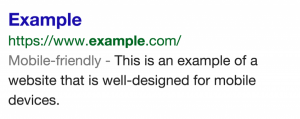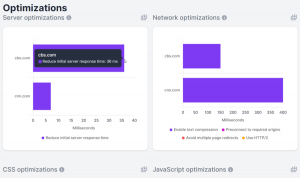I think it’s time we sat down and had a serious conversation about using Twitter and LinkedIn for business purposes. It’s no mystery that both of these services are great marketing tools for business owners – good for networking, good for sharing ideas, good for customer service, good for promotion. But, what separates those who are good at using these two key marketing services from those who use them poorly? Let’s jump right in.
Give more. Expect less.

Hopefully, this woman is following social media best practices!
They say that patience is a virtue – and so it is when it comes to social media marketing. The ability to use Twitter and LinkedIn for marketing, especially organically – meaning without paid advertising – doesn’t just come overnight. The reason for this is simple – it takes time to build a network, and it takes time to build trust and credibility. Because business owners can be impatient, this often leads to trying to take shortcuts and bending the rules. More often than not, this winds up backfiring on the business owner or the brand – either because the account winds up suspended, the engagement drops or the account loses credibility.
Let’s explore what people who are good at using Twitter and LinkedIn to promote their business are doing, what they’re not doing and why giving more while expecting less is a good thing.
On to the habits, then…
Automatic Direct Messages on Twitter
- What pros don’t do – successful Twitter users do not use an application to generate generic form direct messages which are automatically sent to every single person who follows them
- What pros do – people who “get” Twitter (I have a short, growing, aptly-named list) take the time to actually look at the profile of someone who follows them, and if there is mutual interest, they reach out with a personal note
- Why some people do it – it’s fast and easy, and if you spam enough people one of them might click on the link you send them – this is more or less the equivalent of email spam
- Why it’s best not to – when you send an automatic message, even if it has a custom field for the follower’s name in it, it always comes across generic and desperate. When I see an automatic direct message with a link or a “via crowdfire” I usually just ignore it, as do most other people I know. This is more or less the same thing as someone greeting you on the elevator, and you then asking them if they want to buy your book. It’s not going to work 99% of the time.

What do all of these random Twitter direct messages have in common? They have zero value, to me.
Purchase Fake Followers on Twitter
- What pros don’t do – a lot of the intelligent users on Twitter have a large following, but they didn’t pay for it – not for fake followers, anyway
- What pros do – people who understand the dynamics of building a following know it’s the long game, and there isn’t a great way to beat it, without maybe spending advertising dollars – which arguably still gets lower quality followers. Pros interact with people, directly, post interesting content, at the right time, using the right hashtags
- Why some people do it – could be a couple of reasons for this: 1. social proof, more followers = successful business, right? 2. some people just want to feel like they have a big following, like the pros
- Why it’s best not to – fake followers can, and most likely will, destroy your engagement rate on Twitter, so anyone looking at your feed would know, immediately, that something is up. Also, with free tools like TwitterAudit, it’s easier than ever to see if someone is full of it or not. Buying fake followers is a total waste of money, and at worst can get your account suspended.

You cannot get away with fake followers on Twitter.
Post Image Macros, Memes, Quotes, Random Photos on LinkedIn
- What pros don’t do – you won’t see some of the more seasoned LinkedIn users posting sarcastic Willy Wonka image macros, or pictures of their kids playing badminton, or “inspirational” quotes which everyone knows by heart – on obscure starry night background images
- What pros do – some of the best content I see on LinkedIn often comes from the same small group of people – people who take the time to either create great original content, or share niche stuff which I otherwise wouldn’t find – most likely. This makes me more likely to support them, like their posts and comment on them, because the content is actually… engaging!
- Why some people do it – one can only assume Facebook is blocked in these people’s offices. Some probably do it because it generates engagement, like it does on Facebook.
- Why it’s best not to – guess what? Posting irrelevant content makes you appear much less professional – because you’re scraping the bottom of the barrel to get people’s attention, instead of posting good, useful, professional content.

Yes, roses are great, and the best place for them, on the internet, is on Facebook, Pinterest and Instagram. This is not an example of valuable content for LinkedIn.
View Your LinkedIn Profile Every Day, Sometimes Several Times
- What pros don’t do – experienced (sales) professionals on LinkedIn won’t spam visits to my page every day, just to get on my radar. They understand that I am a person, and not a robot or a number on a page – the best salespeople on LinkedIn get to know me before reaching out.
- What pros do – I was very impressed recently with a sales rep from BrightTALK who looked at my LinkedIn and saw I do webinars, then found my Twitter, read through my post history and connected with me on a topic I was passionate about. She then followed up with me via email about our discussion and asked if I wanted to talk about their product. I was impressed – this pitch was personal, the rep knew my passion and engaged me in a discussion before pitching me on their product. Even though I didn’t wind up moving forward, we stayed connected and this is someone I would definitely reach out to when the need arises, and would recommend to others. Do this.
- Why some people do it – again, it’s a fast and lazy effort to “ping” (or “poke”, in Facebook terms) someone, which sends you a notification that someone looked at your profile. It’s also a way to see if you will click back on their profile, which 1. shows that you are active on LinkedIn and 2. may indicate interest in the product or service this person is selling – giving them leverage to reach out to you again.
- Why it’s best not to – this approach is one which is easily seen through, and indicates a very generic approach to reaching someone. It takes more work, but doing some research on the person you want to pitch goes a long way in making a sale, or at least generating a lead.
Send Unsolicited InMail on LinkedIn
- What pros don’t do – looking back, I often find that the people who post the best content on LinkedIn are also those who did not spam email me either before or right after connecting with me – maybe there’s a pattern there.
- What pros do – as mentioned above, a professional will do research before reaching out, and figure out if you’re interested in what they’re offering before sending you a personal message, in the best case one that doesn’t include a pitch at all!
- Why some people do it – again, it’s a volume game. Much like unsolicited, spam email, if you send it to enough people, one or two will maybe click. When you’re more focused on hitting numbers, instead of building real relationships with potential clients, quality sometimes takes a backseat.
- Why it’s best not to – when I get emails like this, especially if I just connected with the person sending me said unsolicited email, I typically delete it and promptly remove the offender from my connections – I unsubscribe. LinkedIn is an awesome place to build business connections, but it’s a social network, so it’s best to use it socially, by starting a friendly conversation instead of showing your product or service down someone’s throat.
Post Ads as LinkedIn Blog Posts
- What pros don’t do – good content marketers know the value of a well thought-through, quality-crafted blog post – it’s a way to show expertise, and build credibility. A professional content marketer would not risk losing reputation by posting an ad, posing as content, on LinkedIn’s blogging platform.
- What pros do – the best content marketers on LinkedIn take the time to not only build an appropriate audience, but also to create engaging content which they think their audience will find genuinely useful.
- Why some people do it – blog posts on LinkedIn have a longer shelf-life than the typical newsfeed update, they allow the use of nice imagery and more room to get the point across.
- Why it’s best not to – posting something like the example here will instantly lower your clout as a professional marketer, and will, without a doubt, lower your engagement rate – decreasing your long-term return on investment (ROI).

This is most likely not how LinkedIn intended for their blogging platform to be used.
Why Aren’t We Talking about Facebook?
Simply put, Facebook has been good at making it hard to go wrong on their platform, by limiting the amount of organic outreach a brand has to “personal” profiles – this severely limits the ability to be annoying.
Twitter and LinkedIn give brands, business owners and marketers much more freedom, which is awesome, because it allows us to achieve greater ROI and make connections which sometimes outlast our time at a given job or business. Social networking is, after all, meant to encourage organic collaboration between people, in the digital space.
The Takeaway
So, now that you’re an expert on what to do and what not to do on LinkedIn and Twitter, how do you actually start creating content which is engaging? I would greatly encourage you to read the following two books, both of which are fairly recent, on not only how to write good content, but also how to be a good marketer!
Ann Handley – Everybody Writes
Chris Brogan – Trust Agents
Here, Ann Handley extrapolates on one of the key points, in her book Everybody Writes, on why – even though less than optimal marketing methods may see some success – they don’t stack up when it comes to long-term ROI.
Sales and marketing, at their best, are built on relationships. The more genuine the relationship, the more long-term return on investment you will achieve.
@kirill_kniazev Trust is the point for me. It’s the one that delivers long-term gains.
— Ann Handley (@MarketingProfs) July 28, 2015
So, which social media platform is the right one for my business? Juntae DeLane provides some great statistics in his post on the subject. Ultimately, the best way to figure out which platform works best is to, as always, test! But, knowing some shortcuts on where to get started testing never hurt anyone.
You’ve made it all the way through the post. Are you ready for my pitch? I don’t really have one, but if social media marketing is something you’re interested in learning more about, for your business, sign up for our totally free 30-minute educational webinar, on the topic, on August 27th! The webinar is part of a series of educational webinars, sponsored by SmartReach Digital.
(230)
Report Post







